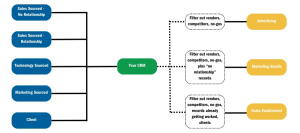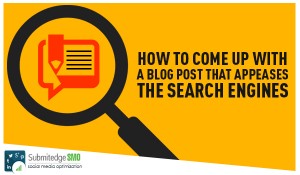by Victor Wong, Op-Ed Contributor, November 22, 2016
More than two-thirds of all digital display spending in the U.S. is programmatic, with mobile fueling much of the growth. Digital ad targeting has never been better. More than $6 billion is spent on data-driven ad tech like data-management platforms (DMPs) and demand-side platforms. And yet, the majority of advertisers show the same exact creative to all of their audience segments.
Digital advertising requires creating unified, but also diverse and personalized experiences. Brands need to start thinking small in their big advertising campaigns.
If you’re spending extra on highly targeted audiences and still using a generic, generalized creative, you’re throwing away your part of the $6 billion.
Why is it so hard to think small, creatively?
Thinking “Small” Is a Big Change In Mindset
Historically, marketers have searched for the “big idea,” the “Mad Men”-style concept that wins the pitch, the client and the hearts of audiences. What matters more is the “long idea,” a concept that facilitates personalized relationship-building over time and across devices.
Brands can’t push a single idea the way they could when television reigned supreme and our knowledge of audiences was limited. Unless it is an extraordinary offer or message, a “big idea” can easily seem irrelevant and be ignored.
Customers have come to expect tailored content, like they see in their Facebook newsfeed and email inbox. But the idea of tailoring the creative to its audience is a massive change in advertising mindset. If you think that through buying targeted data your job is complete, you’re missing a huge opportunity. You must also use targeted messaging.
How Big Organizations Can Think Small
In many organizations, matching creatives to audiences isn’t anyone’s specific responsibility. Doing it right means new roles or shifted responsibilities that fall into gray areas. This is exacerbated by the agency/brand dynamic because each party often thinks the other should be doing the work of customizing and testing creative to keep up with targeted advertising approaches.
Many advertisers struggle to create a targeted creative strategy in the first place. They may have a process for obtaining data from their DMP and applying it to their distribution approach, but things fall apart when they try to use this data to inform their creative strategies.
How Different Creatives Stay True To The Campaign
Sometimes, in an effort to personalize, marketers can swing too far toward data without thinking about how it correlates with the campaign message. Just because brands have the ability to customize doesn’t mean they should forgo a cohesive theme and lose sight of brand ideals. Successful marketers promote a powerful narrative and a provocative purpose—they just use data to customize how they present it. This balancing act takes talent, not to mention resources.
Today, global marketing means telling a cohesive story, but in a personalized, ongoing way. Until advertisers accept that targeting is about both audiences and messages, and until they have sustainable processes for creating and executing targeted creative, they’ll miss out on advertising’s potential: global campaigns that are at once bigger and smaller than ever before.
MediaPost.com: Search Marketing Daily
(18)
Report Post






